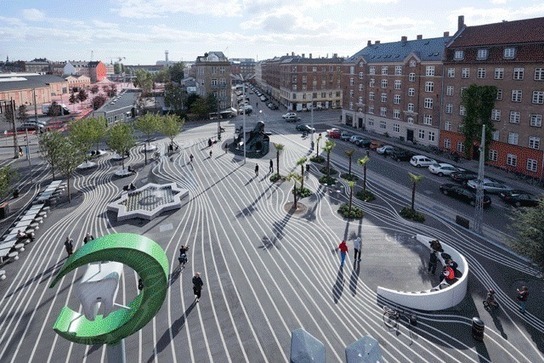
In the past eight years the world has seen important changes – stemming from natural catastrophes, global warming, war, diseases, political and economic crisis among other things – all of which have a direct impact on the way we inhabit our planet and therefore how architects and planners are managing context-related designs for community living. The importance of socially engaged architecture was highlighted by this year's Pritzker Prize winner Alejandro Aravena, whose work appeals to the idea of an active, committed architect who seeks for a democratic urban environment. This development also resonates strongly with ArchDaily's mission statement "to improve the quality of life of the next 3 billion people that will move into cities in the next 40 years, by providing inspiration, knowledge and tools to the architects who will have the challenge to design for them." Therefore, in celebration of ArchDaily's 8th birthday, our Projects Team curated a selection of 24 exemplary projects divided into 3 categories. Each of these projects published over the past 8 years dedicate their design to find greater social, community, civil and humanitarian needs. Social Housing We selected 8 Social Housing projects located in various territories that search for better models of collective living. Some of them propose to re-think social housing as a progressive investment rather than as an expense, as well as projects that balance densification with maintaining local identity. Other building typologies explore flexibility and personalized spaces through the use of color, efficient energy use, or associating a traditional housing model to a light structure that forms a winter garden. In other cases, climate forced design to create organically developed prototypes that combine social traditions with an adequate material selection aimed at easing the fallout from natural catastrophes. Quinta Monroy / ELEMENTAL "CasaNova" Social Housing / cdm architetti associati 15 Social Housings in Riaillé / Mabire Reich Izola Social Housing / OFIS arhitekti Den Travoo / BOGDAN & VAN BROECK Post-Tsunami Housing / Shigeru Ban Architects Social Housing Apartments / VORA Arquitectura Social Complex in Alcabideche / Guedes Cruz Arquitectos Community Civil organizations around the world have actively engaged in architecture by demanding and taking part in urban development strategies, urban design plans and architecture oriented to local needs. As a result, organized, empowered communities arise around specific themes or initiatives: an ecofriendly scouts' center; flexible common areas around massive social housing projects; small “urban acupunture” interventions which highlight a natural seaside landscape; a remarkable overlook managed by a close collaboration between local community, architects, and tourism authorities; a multipurpose pavilion that triggers various uses such as dancing; a structure that uses local materials and construction intelligence to overcome natural disasters; a brick and steel sustainable structure to absorb the basic needs of a rapidly-growing population; or the creation of a cultural center orientated to both local residents and foreign tourist. Quilotoa Shalalá Overlook / Jorge Javier Andrade Benítez + Javier Mera Luna + Daniel Moreno Flores Punta Arenas Tourist Service Station / Colectivo Taller Independiente + Ruta 4 + Pico Estudio Camp Prairie Schooner / El Dorado Inc Urban Renovation Lormont / LAN Architecture Center for Educational, Professional and Sports Integration / Albert Faus 'The Flow' - A Multipurpose Pavilion / Department of ARCHITECTURE Diamond Island Community Center / Vo Trong Nghia Architects Disaster Responsive Shelter / Urban Intensity Architects + TAArchitects + Kyungsub Shin Public Space Spaces seen before as a residual – ignored for years by architects – today have become the main activators of the cities that have used these “residual spaces” as a great way to gather their citizens. Ports, industrial sites, riverbanks, hill slopes and dense urban spaces were once deserted and abandoned, but today they have found life through the occupation of a population that needs to meet each other and that understands that physical and spiritual health is in direct relation with high quality common spaces that enable encounters and sharing. Here we present a series of urban and public spaces – well thought-through and well designed – which don't pretend to be anything other than what they are, made to the correct scale to providing what the occupants really need. Paprocany Lake Shore Redevelopment / RS+ Hasle Harbour Bath / White Superkilen / Topotek 1 + BIG Architects + Superflex PROMENADA / Enota Children's Bicentennial Park / ELEMENTAL Ladeira da Barroquinha / Metro Arquitetos Associados The Luchtsingel / ZUS New Access to Gironella's Historic Center / Carles Enrich
No comments:
Post a Comment